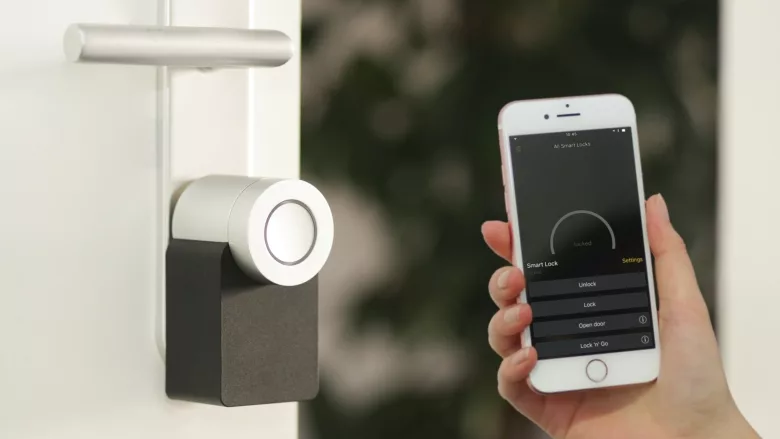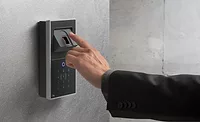How enterprise security leaders can benefit from access control in coworking spaces

Image via Unsplash
In 2015, 331,000 people in the United States worked in shared spaces — otherwise known as coworking spaces. That number has tripled to one million in 2022, per Statista, and the industry is projected to grow at a 9.6% CAGR through 2028. Companies such as WeWork, Regus, and Knotel are both accommodating and spurring the demand for joint workspaces by opening new facilities around the world.
When the COVID pandemic disrupted the entrenched “work-in-the-office model,” businesses started looking for solutions that would meet the health, safety, and convenience needs of their workers, especially in light of the “Great Resignation,” which has forced organizations to become creative to retain and recruit talent. One of these methods has been to seek out coworking spaces that are easily accessible to their staff. In fact, today more than one third work at sites other than the home or office on a weekly basis, an 8% increase from the year before.
It’s not just coworking companies that are driving the trend. Owners and managers of commercial high-rises are converting floors into shared spaces as well. That strategy meets customer demand, more efficiently deploys office resources, and generates enhanced revenue. But this model requires rethinking the traditional office security setup of premises-based access control, surveillance, and alarm systems.
Premises-based systems are outmoded in a world that requires always-on connectivity and seamless integration between physical and cybersecurity. For example, mobile access control — using your phone as an access tool — is far more convenient than keycards. With cloud access, from anywhere with internet access an administrator can create, modify, or terminate entry credentials for a staff member, contractor, or others who need access to a floor, office, conference room, network, or computer. This security technology is far superior to cobbling a patchwork of point solutions together, which typically leaves gaping holes available to hackers and other criminals. In fact, a Brivo survey indicates that almost two-thirds of respondents say that access control is extremely or very important to their hybrid work model.
Organizations continue to flock to cloud-based systems to gain their benefits — including less network administration and maintenance, and security. In fact, the amount of corporate data stored in the cloud has doubled since 2015, with more than 60% being stored in the cloud in 2022.
Owners and managers of mixed-use or coworking spaces are starting to understand the supplemental benefits of collecting security data, especially if they gather other property technology (Proptech) data such as energy use, room occupancy, water consumption, and visitor tracking. The real, largely untapped value comes from big data. For example, access control data has been used collectively across hundreds of thousands of doors across the United States to determine rates of employee return to the workplace during the COVID pandemic. The data, which can be analyzed by building type, industry, worker type, or other criteria, can help facilities managers and other management assess their reopening strategies, as well as compare to peers and understand geographical differences in the pace of return.
The value of data increases even more when you connect access control to other security systems — such as video surveillance and intrusion detection — and to the rapidly emerging Proptech suite of applications. Capturing, analyzing, and applying data — reaping insights from facilities data — lets businesses use resources more officially and gain a competitive advantage over other leasing companies. Examples relating to creating coworking spaces potentially include better space utilization and optimization, more competitive rental fees, and reduced costs for staffing, maintenance, and other overhead activities. Coworking spaces and mixed-use buildings particularly benefit from access control technology because the dedication of spaces to coworking makes it easier to predict building use and gain efficiencies and revenue.
The COVID pandemic disrupted workers’ expectations for the office environment and their terms of employment. Organizations and facilities must offer flexible arrangements that accommodate a wide range of staff: parents with young children, the immunocompromised, those who live far from the office, people caring for elderly relatives, staff with mental health issues and so on. Work-life balance has become paramount. A flexible work model is table stakes for companies that don’t require a physical presence in a specific place at a particular time. In a time period in which companies have difficulty filling jobs, employees expect to be accommodated. A Gallup poll found that 90% of remote-capable employees prefer remote-work flexibility in the future, and 60% specifically prefer hybrid work.
Coworking and shared spaces have become popular working models as society continues to try to emerge from the COVID pandemic. Agility and flexibility have become key, both for the employer and employee. Companies that wish to remain attractive and competitive are transforming spaces to accommodate this new reality. But the real key to transforming these spaces into a powerful source of revenue and a place to gain efficiencies is to generate, analyze, and interpret data from the Proptech suite. And cloud-based access control is increasingly anchoring that technology.
This article originally ran in Security, a twice-monthly security-focused eNewsletter for security end users, brought to you by Security magazine. Subscribe here.
Looking for a reprint of this article?
From high-res PDFs to custom plaques, order your copy today!






